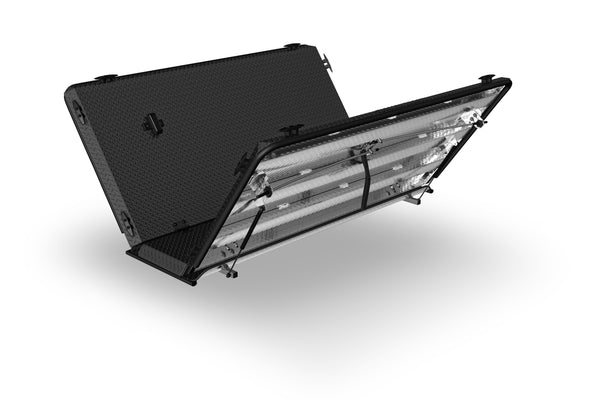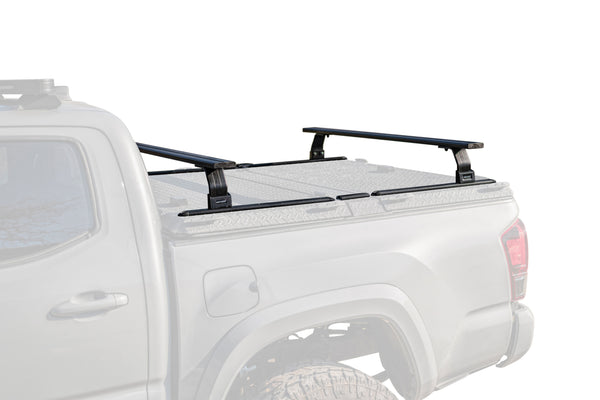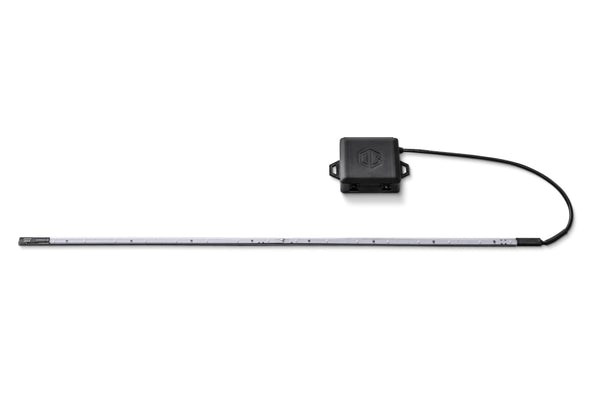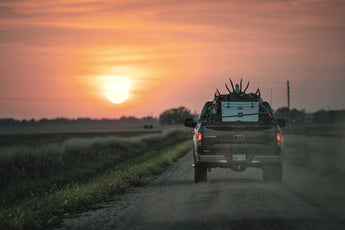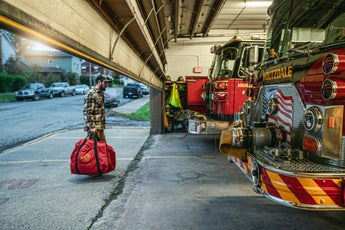There’s not a better way to experience the splendor of the American landscape than wandering it with an arm out the driver’s side window of a pickup. Sure a plane will get you there faster, but flying isn’t without its pain points, not least of which is missing out on the incredible destinations, people, and food that call “flyover country” home. Flying is also incredibly inflexible, especially with short notice. Of course, road trips have their own pain points and potential pitfalls, especially for the unprepared traveler. We believe that anything worth doing is worth doing well, and a road trip is definitely worth doing. To help you prepare for an unforgettable journey, we’ve compiled the best travel advice from DiamondBack team members and friends. Read on for the keys to a successful go at the open road.
Set A Realistic Heading
There are over 4 million miles of road in the United States and they all look much shorter on a map. Don’t bite off more than you can chew. Aim for 6-7 hours of driving per day, more if you’re sharing driving duties, less if you’ve got a young kid in the backseat. With that in mind, based on the number of open days on your calendar, choose a destination that allows for stress-free stops for food and rest without derailing your vacation. If you’re the type to stop at every interesting road-side tourist attraction, plan accordingly. And if you’re more inclined to push the pedal to the metal and log as many miles as possible, be sure to schedule enough breaks to keep you fresh and rested.

Prepare Your Rig
Your truck will soon begin to feel like home, and it’s a home that needs fortification. Get your vehicle tuned-up, change all fluids, and be sure that you’re heading out on tires that are up to the varied terrain you’ll be exploring. Just because your truck has the all-clear doesn’t mean you won’t find yourself performing roadside service, so best to be prepared with extra fluids and basic tools. Not sure which tools to bring? We’ve covered it in a separate Field Journal post, Things You Should Keep In Your Truck.
Make A Budget
The greater distance you travel from the major cities, the more likely you are to find restaurants you’d gladly wait in line for but would never have to. Most of these local eats aren’t exactly expensive but they can add up. Create a budget for food stops so you’re not surprised by a big credit card bill on top of a higher number on the scale. Only you know what you can afford or what your tastes are, but $120 a day is about average for a family of four. That number can be greatly reduced by a cooler packed with snacks and sandwich ingredients. In addition to food, budget for gas, tolls, and admission fees for amusement parks, museums, and the like. Depending on where you’re traveling, consider purchasing a U.S. Park Pass. For just $80 annually, a driver and his/her vehicle’s passengers gain entry and day-use access to over 2,000 federal recreation sites, and that includes our national parks.

Pack Light
This will come as no surprise to seasoned travelers: you’ll probably pack more than you need. That would be fine if not for the burdensome nature of all that cargo. At some point, you’ll need to retrieve something from your truck’s bed and you’ll wish you had some spare room. Give yourself plenty of time to plan out your clothing and activities, and know that it’s better to do laundry on the road than stare at a bag full of unused clothing for two weeks. You’ll likely find yourself wearing the same outfits again and again, and with too little time to put all of your gear to use. Leave the extras at home. Instead, pack 3-5 outfits plus The Ten Essentials, and take only those items that you couldn't live without. Maybe it’s photography gear and a fly-rod, maybe a guitar or brand new kite for your toddler’s maiden flight. Focus on the things you love to do or dream about doing while at home, and ditch all the “just in case” toys. Whatever you pack, consider storing it in marked bins so you’re able to find items quickly, and quickly get back on your way, because you’ll probably need to grab something from the back at the worst possible time.
Keep A Clean Cabin
Few things impact a road trip more negatively than feeling stuck in a cramped and messy truck. When you make a pit-stop, empty the cabin of any trash from the last one. If possible, keep your cabin empty of luggage, too. Secure your gear under your DiamondBack and enjoy plenty of legroom as you move about the country.

Know Where You're Sleeping
There are plenty of vacancies at most hotels, but gone are the days of guaranteed campground openings. People are spending more time outdoors and that’s a good thing, but it also means a reduced supply of camp sites. Book your spot ahead of time if you plan on sleeping under the stars with any amenities nearby. If you’re reading this in the driver’s seat of your truck and it’s too late for that, many campgrounds, including national parks, reserve a set number of campsites for first-come, first-served campers. Be the first guy at the gate and you should be fine, but roll into the park at dusk and you’ll be in for a rude awakening if you ever get to sleep at all. Use hotels and motels for stops in must-visit towns and cities, or as a bail-out when camping plans fall through. For procrastinators and those interested in more seclusion, dispersed camping is available without fee on BLM and national forest land outside of the main camping areas. Find a spot, preferably an already established one, and set up camp. If you decide to go the dispersed camping route, you’ll need to prepare for life without running water and toilet facilities, and with the potential for wild animal encounters. Do your research and go prepared.
Make It A Team Effort
Even if you’re a highway hero who plans on driving every mile of your upcoming trip, get your passenger’s involved. Have your spouse, child, or buddy navigate while you drive. Announce upcoming distance milestones and border-crossings. Make your pit-stops like a pit-stop and give each person a role. While one person washes the windows, another may fuel up, while the other grabs snacks. Everyone back in five minutes. Go!

Wandering With Aim
Contrary to many claims, it’s not ALL about the journey. While you’re making your way around the U.S., leave plenty of time to visit the spots on your list that mean the most to you. Do the research so you know which landmarks or sites you’re not willing to miss, because you’ll definitely miss some. If you’ve waited for years to make the visit, don’t visit in a hurry. The more important a stop is to you, the more specific you should be in your research and planning. Don’t cross off half a bucket-list item. You should also be prepared for the discovery of places and people you’ll love enough to slow you down. If and when you need to pivot, a road atlas is sure to come in handy.
Go Full-On Clark Griswold
Sure, we’d be a bit leery to join a Griswold family vacation, but Clark did get something right: the ceremony of it all. Make playlists, take pictures, sing songs, play games, and don’t lose sight of the fact that the journey you’re on is the stuff of dreams.
